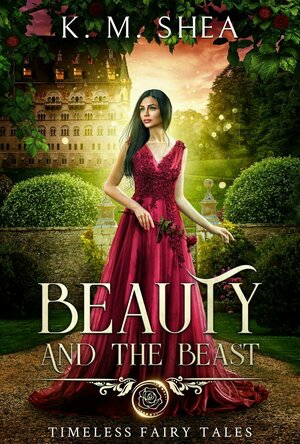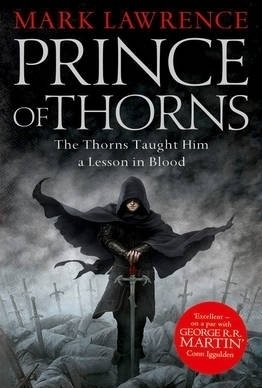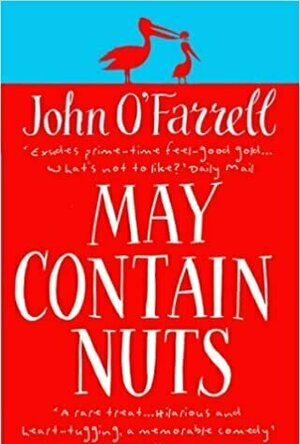
Beauty and the Beast (Timeless Fairy Tales #1)
Book
Once upon a time Elle made a mistake. A small miscalculation sends her through the roof of an...

Sewing World - The Worlds Best Sewing Magazine
Lifestyle and Magazines & Newspapers
App
Sewing World has a good mix of sewing projects, techniques, know-how and how-tos for all sewing...

Midland Red Double-Deckers
Book
Throughout their existence from 1904 until 1981, the Birmingham and Midland Motor Omnibus Company...
LeftSideCut (3776 KP) rated The Walking Dead - Season 3 in TV
Aug 16, 2019 (Updated Oct 25, 2019)
It's not as consistent as the first two for sure.
It's still pretty decent television however.
There's a large Shane shaped hole left after the finale of season 2 - filled by none other than The Governor. He's a piece of work for sure.
I enjoyed The Governor throughout season 3, although a lot of my friends who are fans of the comic protest that he's a far cry from the source material. As someone who is yet to catch up with the comic series, this wasn't a problem for me. He's played with aplomb by David Morrissey, who's obviously having a great time. On the surface, he's a nice guy, who's trying to help his people thrive in a post apocalyptic world - but there's certainly something sinister underneath.
We're also given back Merle, which is great because Michael Rooker. No other reason needed!
After a very brief appearance at the end of season 2, we also get a lot of fan favourite Michonne here, one of my favourite characters in the whole show, played by Danai Gurira.
As in the first two seasons, the cast are pretty great all round. No complaints from me in that respect.
It's the story which takes a bit of a hit. The majority of the season is set in a Prison, and the Governor's story is pretty slow burning as he grows to hate Rick. Some of the episodes feel like filler, with some really strong episodes dotted throughout (the fourth episode in particular is a blinder)
This is an issue that becomes more obvious as the series draw on but at this point isn't severe enough to make a huge impact.
It's still good, gory, bleak, fun? I guess?
#Justice4HershelsFoot

Foundations of Sensation and Perception
Book
Do you wonder how movies - sequences of static frames - appear to move, or why 3-D films look...

Prince of Thorns
Book
From the publisher that brought you Game of Thrones...Prince of Thorns is the first volume in a...
Neumann applies moral stories and real-life scenarios to illustrate the power of a determined mind. He urges readers to never give up, even in the face of adversity, but to use these hardships in alternative ways. Neumann uses examples from Buddhism and Christianity as well as history to show the potential of every individual.
Many self-help books give step-by-step guides to success and dismiss mental and neurological difficulties. Whilst these authors may encourage readers to reach their goals, Neumann acknowledges that it is not always possible. Yet, this does not result in failure. Neumann's insight into the workings of the world reveals there is far more to happiness than an end goal. There is more to life than being the best, being famous and being successful, but more often than not, these lessons are hard-fought. With this book, Neumann attempts to stop readers in their tracks, to stop their destructive power, to realise their true potential and look at the world afresh.
Neumann writes as though he is speaking in front of an audience. Whilst this adds honesty and passion, it disrupts the flow of the text. The book lacks grammar and is oftentimes repetitive. As a proofreader, it is difficult not to pick up on these errors, but it indeed makes the author sound human. Neumann does not use the complicated language of psychologists, does not pretend to have qualifications in counselling or such like but has his readers' best interests at heart.
Easy and quick to read, Harness the Power of the Invincible Mind is a book that stays with you long after completing. It contains so many analogies and examples that readers will want to highlight, share and, hopefully, apply in their day-to-day lives.

May Contain Nuts
Book
Alice never imagined that she would end up like this. Is she the only mother who feels so...
Purple Phoenix Games (2266 KP) rated Castle Dice in Tabletop Games
Jun 28, 2021
Castle Dice is a dice and resource management game that pits players against each other to build the greatest castle in the land. It is played over seven rounds and when the seventh round is complete players will tally up VPs to declare a winner!
To setup place the Turn Tracker board where players can see it. Shuffle each of the differently-backed Castle Deck, Village Deck, and Market Deck from which players will be drawing cards throughout the game. Assemble piles of Villager Tokens, Animals, and all dice. Each player receives their own playmat and five Tracking Beads placed just like the photo above. The game may now begin!
Castle Dice spans seven rounds with each round following a strict order of play. This play order and any special effects of the round are conveniently printed on the playmats and Turn Tracker respectively. The Turn Tracker will display which type of dice each player will take from the pool, roll, and add to the World Pool – to which every player will have access. The turn order will show all the phases of each round (which will not be thoroughly covered in this review, but will be at least mentioned): Determine first player, Draw cards, “Choice Dice”, Roll dice, Gather dice, Market, Workers produce, Merchants, Build castle parts, Barbarians.
Players will be able to draw cards from either the Castle or Village decks to supply their hand limit of five and give the player options to build at different phases of the game. Each round players will have standard dice to cull and roll from the pile, but also a choice of any dice type they prefer to be added to the World Pool in the next phase. After the World Pool has been populated with all the dice the players have rolled, each player will then choose a die from the World Pool one at a time around the table in player order. These dice will show resources (Wood, Stone, Gold, Land, and Iron), animals (Pig, Chicken, Cow, Horse), and Barbarians. By hiring Workers and Guards players will be able to produce more resources and subsequently protect them from raiding Barbarians who wish to drain players of one of each of their resources at the end of the round. The Build action is self-explanatory as players will be spending resources gathered to build castle parts using cards from their hand. Play continues in this very structured fashion until the end of seven rounds. Whichever player has amassed the greatest amount of VP from having the most animals, most villagers, Bards, and built castle parts will be the winner!
Components. Castle Dice is sold in a large box – a little wider than Kingdomino’s box, about two inches longer, and about three times as tall (still taller or thicker than Legendary Marvel, Harry Potter Hogwart’s Battle, and The 7th Continent). So there are a lot of components, and they are all good quality. The cards are nice, the boards are thick, but glossy (boo), and the dice are all fine. I question the use of the red Tracking Beads, as they are a little too large to fit in the areas they are designed to track, and a simple wooden cube would have been just as effective and fit the space better. Perhaps I will de-bling mine to boring cubes, or find something else more suitable. The art style, though, is very lovable and cute. Except the Farmer, who seems to have a large dangle of snot hanging out of his or her nose. Being from the Midwest I see a lot of farmers, and I know that they aren’t always super snotty. Maybe they were back in the Medieval Period, but it is a strange detail in the art. Overall though I am very impressed with the quality of the components.
I am similarly impressed overall with the gameplay. I am not incredibly Type A, but I think I lean that way, and having a game with very strict phases of play with a definite end game trigger is very appreciated. I absolutely LOVE how each round is plainly shown on the Turn Tracker and similarly how each phase is clearly printed on each playmat. These notifications eliminate the need for reference cards/sheets/what have you, and I applaud the design team for this. One of my gaming pet peeves is needing to reference the rulebook every turn because I am unsure of what I do next or being worried that I have forgotten a step. No need here – it is all in front of me.
Playing the game is also quite enjoyable. I do not know many gamers who hate games utilizing dice, and typically the more dice the better. Well Castle Dice comes with 64 custom dice and it just feels good to be rolling seven or eight dice each round. But the coolest part is that each player has the standard dice to roll but also several “Choice Dice” that can be of any flavor. That doesn’t necessarily mean they will end up gathering those dice, but they will be options for all players. That is a unique twist that I thoroughly enjoy. Also the balancing act of wanting to do 34 things on your turn, but not having the time to accomplish it adds that level of danger I like in my games. Those dang Barbarians! Overall Purple Phoenix Games gives Castle Dice a non-boogery-farmer’s 14 / 18. It’s a great game and if you see it in the wild pick it up! You will have a good time with it.

International Journal of Gynecology & Obstetrics
Education and Magazines & Newspapers
App
The International Journal of Gynecology & Obstetrics (IJGO) publishes articles on all aspects of...


